3-Bromobenzonitrile
Modify Date: 2025-08-21 18:45:09

3-Bromobenzonitrile structure
|
Common Name | 3-Bromobenzonitrile | ||
|---|---|---|---|---|
| CAS Number | 6952-59-6 | Molecular Weight | 182.017 | |
| Density | 1.6±0.1 g/cm3 | Boiling Point | 225.8±13.0 °C at 760 mmHg | |
| Molecular Formula | C7H4BrN | Melting Point | 38-40 °C(lit.) | |
| MSDS | USA | Flash Point | 90.3±19.8 °C | |
| Symbol |

GHS07 |
Signal Word | Warning | |
Use of 3-Bromobenzonitrile |
| Name | 3-Bromobenzonitrile |
|---|---|
| Synonym | More Synonyms |
| Density | 1.6±0.1 g/cm3 |
|---|---|
| Boiling Point | 225.8±13.0 °C at 760 mmHg |
| Melting Point | 38-40 °C(lit.) |
| Molecular Formula | C7H4BrN |
| Molecular Weight | 182.017 |
| Flash Point | 90.3±19.8 °C |
| Exact Mass | 180.952698 |
| PSA | 23.79000 |
| LogP | 2.14 |
| Vapour Pressure | 0.1±0.4 mmHg at 25°C |
| Index of Refraction | 1.606 |
Synonym:m-Bromobenzonitrile Section 2 - COMPOSITION, INFORMATION ON INGREDIENTS
Risk Phrases: 20/21/22 36/37/38 Section 3 - HAZARDS IDENTIFICATION EMERGENCY OVERVIEW
Harmful by inhalation, in contact with skin and if swallowed. Irritating to eyes, respiratory system and skin. Potential Health Effects Eye: Causes eye irritation. May cause chemical conjunctivitis. Skin: Causes skin irritation. May be harmful if absorbed through the skin. Ingestion: May cause gastrointestinal irritation with nausea, vomiting and diarrhea. May cause cardiac disturbances. May cause central nervous system depression. Inhalation: Causes respiratory tract irritation. May cause cardiac abnormalities. Can produce delayed pulmonary edema. Chronic: Effects may be delayed. Section 4 - FIRST AID MEASURES Eyes: Immediately flush eyes with plenty of water for at least 15 minutes, occasionally lifting the upper and lower eyelids. Get medical aid. Skin: Get medical aid. Flush skin with plenty of water for at least 15 minutes while removing contaminated clothing and shoes. Wash clothing before reuse. Ingestion: Never give anything by mouth to an unconscious person. Get medical aid. Do NOT induce vomiting. If conscious and alert, rinse mouth and drink 2-4 cupfuls of milk or water. Inhalation: Remove from exposure and move to fresh air immediately. If breathing is difficult, give oxygen. Get medical aid. Do NOT use mouth-to-mouth resuscitation. If breathing has ceased apply artificial respiration using oxygen and a suitable mechanical device such as a bag and a mask. Notes to Physician: Treat symptomatically and supportively. Section 5 - FIRE FIGHTING MEASURES General Information: As in any fire, wear a self-contained breathing apparatus in pressure-demand, MSHA/NIOSH (approved or equivalent), and full protective gear. During a fire, irritating and highly toxic gases may be generated by thermal decomposition or combustion. Containers may explode when heated. Runoff from fire control or dilution water may cause pollution. Extinguishing Media: For small fires, use dry chemical, carbon dioxide, or water spray. For large fires, use dry chemical, carbon dioxide, alcohol-resistant foam, or water spray. Cool containers with flooding quantities of water until well after fire is out. Section 6 - ACCIDENTAL RELEASE MEASURES General Information: Use proper personal protective equipment as indicated in Section 8. Spills/Leaks: Vacuum or sweep up material and place into a suitable disposal container. Clean up spills immediately, observing precautions in the Protective Equipment section. Avoid generating dusty conditions. Provide ventilation. Section 7 - HANDLING and STORAGE Handling: Minimize dust generation and accumulation. Avoid contact with eyes, skin, and clothing. Keep container tightly closed. Avoid ingestion and inhalation. Use with adequate ventilation. Wash clothing before reuse. Storage: Store in a tightly closed container. Store in a cool, dry, well-ventilated area away from incompatible substances. Section 8 - EXPOSURE CONTROLS, PERSONAL PROTECTION Engineering Controls: Facilities storing or utilizing this material should be equipped with an eyewash facility and a safety shower. Use adequate general or local exhaust ventilation to keep airborne concentrations below the permissible exposure limits. Exposure Limits CAS# 6952-59-6: Personal Protective Equipment Eyes: Wear appropriate protective eyeglasses or chemical safety goggles as described by OSHA's eye and face protection regulations in 29 CFR 1910.133 or European Standard EN166. Skin: Wear appropriate protective gloves to prevent skin exposure. Clothing: Wear appropriate protective clothing to prevent skin exposure. Respirators: Follow the OSHA respirator regulations found in 29 CFR 1910.134 or European Standard EN 149. Use a NIOSH/MSHA or European Standard EN 149 approved respirator if exposure limits are exceeded or if irritation or other symptoms are experienced. Section 9 - PHYSICAL AND CHEMICAL PROPERTIES Physical State: Powder and chunks Color: white Odor: None reported. pH: Not available. Vapor Pressure: Not available. Viscosity: Not available. Boiling Point: 225 deg C @ 760 mmHg Freezing/Melting Point: 38 - 40 deg C Autoignition Temperature: Not applicable. Flash Point: > 110 deg C (> 230.00 deg F) Explosion Limits, lower: Not available. Explosion Limits, upper: Not available. Decomposition Temperature: Solubility in water: Insoluble. Specific Gravity/Density: Molecular Formula: C7H4BrN Molecular Weight: 182.02 Section 10 - STABILITY AND REACTIVITY Chemical Stability: Stable at room temperature in closed containers under normal storage and handling conditions. Conditions to Avoid: Dust generation, excess heat. Incompatibilities with Other Materials: Oxidizing agents, strong bases. Hazardous Decomposition Products: Nitrogen oxides, carbon monoxide, carbon dioxide, hydrogen bromide. Hazardous Polymerization: Has not been reported. Section 11 - TOXICOLOGICAL INFORMATION RTECS#: CAS# 6952-59-6: DI2459500 LD50/LC50: Not available. Carcinogenicity: 3-Bromobenzonitrile - Not listed by ACGIH, IARC, or NTP. Other: See actual entry in RTECS for complete information. Section 12 - ECOLOGICAL INFORMATION Section 13 - DISPOSAL CONSIDERATIONS Dispose of in a manner consistent with federal, state, and local regulations. Section 14 - TRANSPORT INFORMATION IATA Shipping Name: Nitriles, TOXIC, N.O.S.* Hazard Class: 6.1 UN Number: 3276 Packing Group: III IMO Shipping Name: NITRILES, TOXIC, N.O.S. Hazard Class: 6.1 UN Number: 3276 Packing Group: III RID/ADR Shipping Name: Nitriles, TOXIC, N.O.S. Hazard Class: 6.1 UN Number: 3276 Packing group: III Section 15 - REGULATORY INFORMATION European/International Regulations European Labeling in Accordance with EC Directives Hazard Symbols: XN Risk Phrases: R 20/21/22 Harmful by inhalation, in contact with skin and if swallowed. R 36/37/38 Irritating to eyes, respiratory system and skin. Safety Phrases: S 26 In case of contact with eyes, rinse immediately with plenty of water and seek medical advice. S 36/37/39 Wear suitable protective clothing, gloves and eye/face protection. WGK (Water Danger/Protection) CAS# 6952-59-6: No information available. Canada None of the chemicals in this product are listed on the DSL/NDSL list. CAS# 6952-59-6 is not listed on Canada's Ingredient Disclosure List. US FEDERAL TSCA CAS# 6952-59-6 is not listed on the TSCA inventory. It is for research and development use only. SECTION 16 - ADDITIONAL INFORMATION N/A |
CHEMICAL IDENTIFICATION
HEALTH HAZARD DATAACUTE TOXICITY DATA
|
| Symbol |

GHS07 |
|---|---|
| Signal Word | Warning |
| Hazard Statements | H302-H312-H315-H319-H332-H335 |
| Precautionary Statements | P261-P280-P305 + P351 + P338 |
| Personal Protective Equipment | dust mask type N95 (US);Eyeshields;Gloves |
| Hazard Codes | Xn:Harmful; |
| Risk Phrases | R20/21/22;R36/37/38 |
| Safety Phrases | S26-S36-S36/37/39 |
| RIDADR | 3276 |
| WGK Germany | 3 |
| RTECS | DI2459500 |
| Packaging Group | III |
| Hazard Class | 6.1 |
| HS Code | 29269095 |
| Precursor 0 | |
|---|---|
| DownStream 10 | |
| HS Code | 2926909090 |
|---|---|
| Summary | HS:2926909090 other nitrile-function compounds VAT:17.0% Tax rebate rate:9.0% Supervision conditions:none MFN tariff:6.5% General tariff:30.0% |
| Benzonitrile, 3-bromo- |
| m-bromobenzonitrile |
| 3-Bromobenzonitrile |
| Benzonitrile,m-bromo |
| Benzonitrile,3-bromo |
| MFCD00001796 |
| NCR CE |
| Benzonitrile, 3-bromo- (9CI) |
| 3-cyanobromobenzene |
| 1-Bromo-3-cyanobenzene |
| EINECS 230-127-9 |
| 3-Bromo benzonitrile |
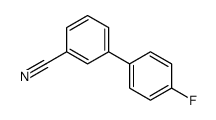 CAS#:10540-33-7
CAS#:10540-33-7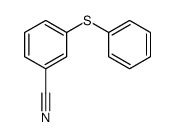 CAS#:108697-88-7
CAS#:108697-88-7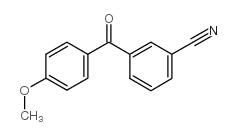 CAS#:60694-67-9
CAS#:60694-67-9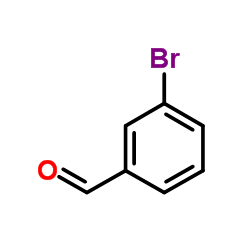 CAS#:3132-99-8
CAS#:3132-99-8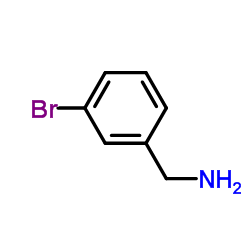 CAS#:10269-01-9
CAS#:10269-01-9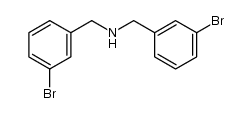 CAS#:215667-42-8
CAS#:215667-42-8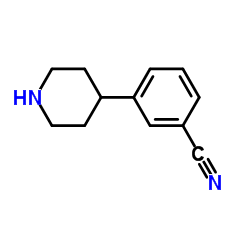 CAS#:370864-72-5
CAS#:370864-72-5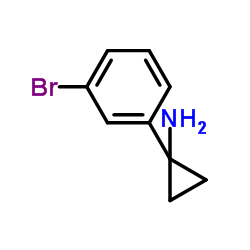 CAS#:546115-65-5
CAS#:546115-65-5 CAS#:14378-89-3
CAS#:14378-89-3 CAS#:937013-66-6
CAS#:937013-66-6
